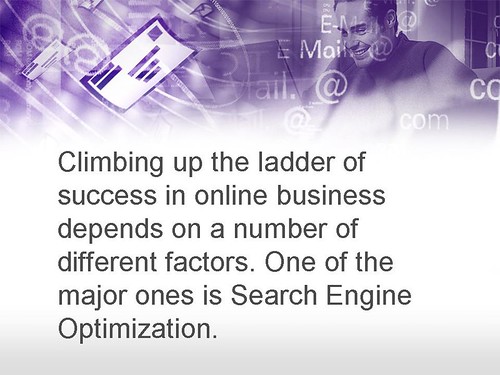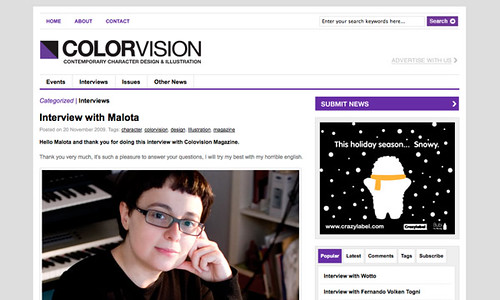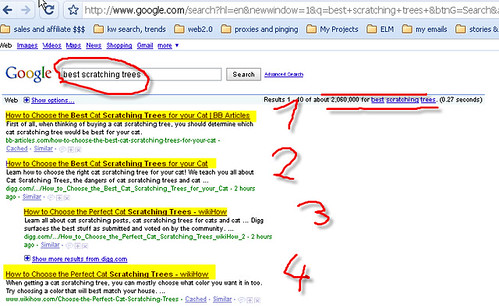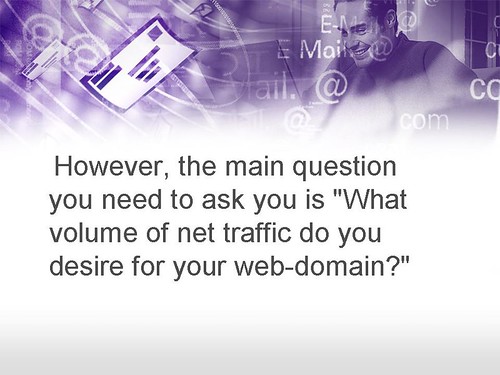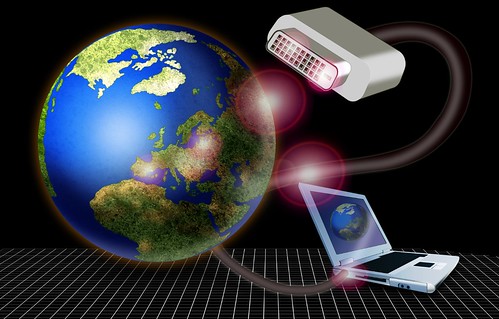Blogger Andrew Trench recently presented a theory on the threshold of when Internet penetration starts to matter, writing:
Social networks have also been given plenty of credit for the revolution unfolding in Egypt.
So I went and had a look at the numbers over on www.internetworldstats.com to see what they could tell us about these two scenarios. Well, fascinatingly, both Egypt and Tunisia have seen a massive growth in internet users and internet penetration over the last 10 years.
Both have now got internet penetration of over 20% and in Tunisia's case it was as high as 34%.While it is clearly simplistic to over-state this factor and there must be many more drivers contributing to such a rapid political uprising, it is obviously a factor as evidenced by the Egyptian regime pulling the plug on the country's internet access to try and block the rising tide of revolt.
My back-of-napkin theory is this: that a rapid increase in internet penetration in a repressive regime does play an important role as it provides an unfettered channel of communication allowing disaffected citizens to share views - and more importantly - to rapidly organise and mobilise.
If Egypt and Tunisia are valid case studies, it looks like internet penetration of around 20% is the mark.
Geopolitics & Macroeconomics adds:
Internet penetration: Social networking sites were critical to sustaining the momentum in the recent protests. The internet penetration in Egypt is 16%. In Libya, it is a meagre 5% [1]. The unrest in Libya has thus far remained concentrated in regions that are geographically distant from the seat of ‘real' power (see more on this below). The dependence of momentum on internet communication is far greater in Libya than in Egypt where protests began in Cairo itself.
Taking the conversation to Pakistan, Sabene Saigol writes, on BrandRepublic:
Perhaps one reason for this is that we're still not that used to communicating via the ‘net - maybe we need greater broadband and internet penetration. Personally I think it is more to do with culture - while Pakistani internet users are savvy to using social media to connect with friends, I feel they have not yet ‘crossed over' to seeing SM as a means for professional communications - or even wider social communications that go beyond their immediate circle. Yes, there are no doubt savvy people - both within marketing and tech circles, and outside - however, these people are likely a tiny proportion of the total number of ‘net and social media users.
Surface Encounters
LeBron James of Miami Heat delayed by Cleveland Cavaliers garage parking security
![]() LeBron James was delayed in getting into the arena for the Miami Heat's shootaround Tuesday morning when he arrived with a driver and with a second car at the entrance for the Cavs' underground garage parking lot.
LeBron James was delayed in getting into the arena for the Miami Heat's shootaround Tuesday morning when he arrived with a driver and with a second car at the entrance for the Cavs' underground garage parking lot.
Surface Encounters
FOCUS: Courageous workers at troubled nuclear plant endure tough <b>...</b>
Each of the employees of Tokyo Electric Power Co. and other workers engaged in containing damage at the stricken Fukushima Daiichi nuclear power plant is given 30 survival food crackers and a 180 milliliter pack of vegetable juice for ...
Surface Encounters
Japan Nuke Accident Seen From Seattle - Science <b>News</b>
Clues to events at crippled plant found in traces of radiation reaching Pacific Northwest.
Surface Encounters
Apple advertises its products as magical. They’re at the intersection of “technology and the liberal arts,” Steve Jobs said today. Something that moves your heart, not just your lust for technology. Will consumers still buy that in 2011?
The big picture question of the day is whether Apple has done it again. With the original iPad, Apple crushed its rivals, taking more than 90 percent of the tablet market in 2010 and selling more than 15 million units. Jobs predicted today that 2011 will be the year of the iPad 2. Based on what I have seen today, I think he’s mostly, but not entirely, right.
Competitors will discover that Apple has a lot of inherent financial advantages, including being a low-cost leader. That may not sound intuitive, but I believe it has to be true. It is selling so much volume of its products that it can get discounts on parts and manufacturing services that no one else can get.
When it sells its products in stores, it also doesn’t have to give away 20 percent of the margin to a retailer. That is a huge financial advantage. Carriers are also willing to subsidize the costs of Apple products in a way that they won’t with other tablet vendors. All of these things may explain why the Motorola Xoom, a very cool product, is selling for $800 while Apple has priced its new devices at $499 to $829, (and dropped the price of the old iPad to $399). Apple has also left very little room for rivals here, since it has signed up both AT&T and Verizon. Perhaps there is room for rivals to sell $199 machines, but users probably aren’t going to like them.
Those are reasons why any cool Apple mobile product could beat other rivals. But Apple has also done some smart things with the iPad 2. It has created another rev of its microprocessor, the A5, which has two cores, or computing brains. And it has nine times faster graphics than its old A4 chip. Since Apple designs this chip itself, it doesn’t have to give away much margin to a chip design firm. It only has to give a small margin to a chip manufacturer such as Samsung to make the chips.
Apple has also custom-designed the A5 to run Apple applications on a device with a 10-hour battery life. Apple should have an edge there, as it won’t sell the A5 to rivals. But if this is an advantage, it isn’t likely to last long, as Nvidia is being very aggressive with a new quad-core chip that it could sell to any Android rivals.
The design of the iPad 2 is where Apple has more advantages. The iPad 2 will have faster web-browsing with a new version of Safari. It has two cameras that will inspire a lot of video and photo-related apps. The availability of the Mac applications — iMovie, Garage Band, and Photo Booth — on the iPad 2 will make a lot of users happy. More interesting features will come with new releases of the iOS, or Apple’s operating system in the fairly near future.
There are some users who won’t like the restrictions of Apple’s ecosystem. If they want universal serial bus (USB) and SD card ports, they are out of luck. Apple didn’t change the resolution of its screen either, leaving it at 1024 x 768. Competitors could add these options and put emphasis on them as selling points. (Critics are disappointed that Apple did not improve the display, but that’s a big cost issue others have too).
Apple has also made great improvements in the feel of the product. It’s 33 percent thinner, 2 ounces lighter, and it has a wonderful new screen cover that doubles as a stand for the device. (It wakes up the device when you peel it back and it has micro-fibers that clean the screen when the cover is on).
Now here is why Jobs is not entirely right. Apple has come up with a stunning machine at prices that the competitors will have a hard time beating. But it is almost inevitable that Android-based tablets will gain market share on Apple.
So far, I don’t see the Android machine that will beat the iPad 2. But the potential is there, given ingredients such as Android 3.0, Nvidia Tegra 2 chips and other fast microprocessors, and 4G LTE. The latter is the main weakness in Apple’s armor.
LTE is fast, with a minimum speed on Verizon at around 12 megabits a second and actual speeds running much higher than that now. Getting access to 4G LTE is as big a benefit as having access to lots of cool apps, from my point of view. Right now, the timing of the still-young LTE technology means that Apple cannot yet put it into its mass-produced, lowest-cost tablet computers.
If LTE costs come down sometime soon, then Apple can launch a new version of the iPad to incorporate the technology. But it’s not a simple upgrade, as it means that the hardware of the machine — including the radio chip — has to change. And for now, LTE chips are larger than their 3G equivalents, so the heat dissipation and product size are affected. In other words, LTE can force Apple to redesign the iPad.
Apple can do that. But Android tablet makers might be able to move faster than Apple directly into the 4G LTE tablet market. If they do that, then they will have found a scenario where they could steal a march on Apple. Apple is not likely to let that gap last for a long time, but it might be enough for Apple to lose some share this year.
Apple’s leadership position in this market will be hard to beat, but the collective weight and reach of Android rivals could erode it. And here’s a sobering thought: If Apple eventually winds up with only 30 percent of the tablet market, it could still be No. 1, and its place as the largest technology company in the world will not be at risk.
Check out Apple’s overview video on the iPad 2 and Jobs’ comments on technology and the liberal arts below.
Next Story: Loot Drop banks on talented game designers as it takes on social gaming’s giants (exclusive) Previous Story: Electric car startups to square off against Big Auto competition
Dirty Percent
Tuesday, 1 March 2011
It’s not hard to make the case that Apple’s new in-app subscription system offers numerous benefits to users, developers, and publishers. But whatever those benefits, they stem from the mere existence of these new subscription APIs. What’s controversial is the size of Apple’s cut: 30 percent.
No one is arguing that Apple shouldn’t get some cut of in-app purchases that go through iTunes. And, if Apple were taking a substantially smaller cut, there would be substantially fewer people objecting to Apple’s rules (that subscription-based publishing apps must use the system; that they can’t link to their external sign-up web page from within the app; and that they must offer in-app subscribers the same prices available outside the app).
The reasonable arguments against Apple’s policies seem to be:
Apple should be taking less, perhaps far less, than 30 percent.
Apple should not require subscription-based apps to use the in-app subscription APIs. If it’s a good deal for publishers, they’ll choose to use the system on their own.
Apple should not require price-matching from subscription offers outside the app. Publishers should be allowed to charge iOS users more money to cover Apple’s cut.
Apple should consider business models that simply can’t afford a 70/30 revenue split.
Let’s consider these in reverse order.
Apple Should Consider Business Models That Can’t Afford a 70/30 Revenue Split
Apple doesn’t give a damn about companies with business models that can’t afford a 70/30 split. Apple’s running a competitive business; competition is cold and hard. And who exactly can’t afford a 70/30 split? Middlemen. It’s not that Apple is opposed to middlemen — it’s that Apple wants to be the middleman. It’s difficult to expect them to be sympathetic to the plights of other middlemen.
Some of these apps and services that are left out might be ones that iOS users enjoy, though. This is the leading argument for how this new policy will in fact hurt users, and, as a result, Apple itself: it’ll drive good apps off the platform. Frequently mentioned examples: Netflix and Kindle. For all we know, though, Netflix may well be fine with this policy. Apple would only get a 30 percent cut of new subscriptions that go through the Netflix iOS app, and that might be a bounty Netflix can live with in exchange for more subscribers. Keep in mind, too, that Netflix and Apple seemingly get along well enough that Netflix is built into the Apple TV system software.
Kindle, and e-book platforms in general, are a different case. For one thing, Kindle doesn’t use subscriptions. Kindle offers purchases. Presumably, given Apple’s rejection of Sony’s e-book platform app last month, Apple is going to insist on the same rules for in-app purchases through apps like Kindle as they do for in-app subscriptions. If so, something’s got to give. The “agency model” through which e-books are sold requires the bookseller to give the publisher 70 percent of the sale price. So if the publisher gets 70 and Apple gets 30, that leaves a big fat nothing for Amazon, or Barnes & Noble, or Kobo, or anyone else selling books through native iOS apps — other than iBooks, of course.
But leaving aside the revenue split, there are technical limitations as well. The existing in-app purchasing system in iOS has a technical limit of 3,500 catalog items. I.e. any single app can offer no more than 3,500 items for in-app purchase. Amazon has hundreds of thousands of Kindle titles.
Something’s got to give here. I don’t know what, but there must be more news on this front coming soon. I don’t believe Apple wants to chase competing e-book platforms off the App Store.
Apple Should Not Require Price Matching
Why not allow developers and publishers to set their own prices for in-app subscriptions? One reason: Apple wants its customers to get the best price — and, to know that they’re getting the best price whenever they buy a subscription through an app. It’s a confidence in the brand thing: with Apple’s rules, users know they’re getting the best price, they know they’ll be able to unsubscribe easily, and they know their privacy is protected.
Credit card companies insist on similar rules: retailers pay a processing fee for every credit card transaction, but the credit card companies insist that these fees not be passed on to the customer. Customers pay the same price as they would if they used cash — which encourages them to use their credit card liberally. (Going further, many charge cards offer cash back on each purchase — they can do this because the cash-back percentage refunded to the customer is less than the transaction processing fee paid by the retailer.)
So the same-price rule is good for the user, and good for Apple. But Matt Drance argues that Apple could dissipate much of this subscription controversy by waiving this rule:
The requirement that IAP content be offered “at the same price
or less than it is offered outside the app,” combined with the
70/30 split, means developers must make less money off of iOS by
definition. They can’t price their IAP content higher to offset
the commission, nor can they price their own retail content lower.If I am interpreting this correctly, I can’t bring myself to see
it as reasonable. […] I think a great deal of this drama could
go away if Apple dropped section 11.13 while keeping section
11.14: Your prices on your store are your business; just don’t
be a jerk and advertise the difference all over ours.
And I agree with him. Yes, the same-price rule is good for users and for Apple, but waiving this rule wouldn’t be particularly bad for users or for Apple, either — and it would give publishers some freedom to experiment.
I suspect one reason Apple won’t budge is that their competitors — like Amazon — insist on best-price matching.
Apple Should Not Require Apps to Offer In-App Subscriptions
I’m sympathetic to this argument, too. “If you don’t like our terms, don’t use our subscription system.” But it has occurred to me that this entire in-app subscription debate mirrors the debate surrounding the App Store itself back in 2008 — that 30 percent was too large a cut for Apple to take, that it shouldn’t be mandatory, etc. The same way many developers wanted (and still want) a way to sell native iOS apps on their own, outside the App Store, many publishers now want a way to sell subscriptions on their own, outside the App Store.
The fact is, the App Store is an all-or-nothing affair. You play by Apple’s rules or you stick to web apps through Mobile Safari. This alternative is no different for periodical publishers than it was (and remains) for app developers in general. A lot of these demands boil down to a desire for more autonomy for native iOS app developers. Apple has never shown any interest in that.
There’s one striking difference between the subscription controversy today and the App Store controversy in 2008: with subscriptions, Apple is taking away the ability to do something that they previously allowed. There was never a supported way to install native apps for iOS before the App Store. Subscriptions sold outside the App Store, on the other hand, were allowed until last month.
Apple Should Be Taking Less, Possibly Far Less, Than 30 Percent
Another difference between the App Store itself and in-app subscriptions is that with apps, Apple hosts and serves the downloads. Apple covers the bandwidth, even for gargantuan gigabyte-or-larger 99-cent games. The OS handles installation.
With in-app subscriptions (and purchases), however, the app developer is responsible for hosting the content, and for writing the code to download, store, and manage it. So — one reasonable argument goes — given that Apple is doing less for subscription content than it does for apps (or for music and movies purchased through iTunes), Apple should take less of the money.
Taken further, the argument boils down to this: that for in-app subscriptions and purchases, Apple is serving only as a payment processer — and thus, a reasonable fee for transactions would be in the small single digits — 3, 4, maybe 5 percent, say. More or less something along the lines of what PayPal charges.
Apple, I think it’s clear, doesn’t see it this way. Apple sees the entire App Store, along with all native iOS apps, as an upscale, premium software store: owned, controlled, and managed like a physical shopping mall. Brick and mortar retailers don’t settle for a single-digit cut of retail prices; neither does the App Store.
Seth Godin argues that Apple’s 30 percent cut is too big to allow publishers to profit:
Except Apple has announced that they want to tax each subscription
made via the iPad at 30%. Yes, it’s a tax, because what it does is
dramatically decrease the incremental revenue from each
subscriber. An intelligent publisher only has two choices: raise
the price (punishing the reader and further cutting down
readership) or make it free and hope for mass (see my point above
about the infinite newsstand). When you make it free, it’s all
about the ads, and if you don’t reach tens or hundreds of
thousands of subscribers, you’ll fail.
Godin’s logic strikes me as questionable. For one thing, he freely switches between a newsstand metaphor (arguing, perhaps accurately, that the App Store is too large for publishers to gain attention from potential readers in the first place — you won’t read what you never notice) and the economics of subscriptions. But subscribers are the opposite of newsstand readers. Newsstand readers are buying a single copy, often on impulse. Subscribers are readers who are already hooked, and who know what they want. Put another way, the size of Apple’s cut of subscription revenue — whether it were higher or lower — has no bearing on the “attention at the newsstand” problem.
Second, the problem facing traditional publishers today is that circulation is falling. Newsstand sales and subscriptions are falling, under pressure from free-of-charge websites and other forms of digital content. The idea with Apple’s 70-30 revenue split is that developers and publishers can make it up in volume — that people aren’t just somewhat more willing to pay for content through iTunes than other online content stores, they are far more willing. The idea is that Apple has cracked a nut no one else1 has — they’ve created an ecosystem where hundreds of millions of people are willing to pay for digital content. Thus, potentially, publishers won’t just make more money keeping only 70 percent of subscription fees generated through iOS apps than they are now with 96 percent (or whatever they’re left with after payment processing fees) of subscription fees they’re selling on their own — they stand to make a lot more money.
I’m not guaranteeing or even predicting that it’s going to work out that way. I’m just saying that’s Apple’s proposition.
Godin’s assumption is that iOS in-app subscriptions won’t significantly increase the number of subscribers. If he’s right about that, then he’s right that Apple’s 30 percent cut will prove too expensive for publishers. But Apple’s bet is that in-app subscriptions can dramatically increase the number of subscribers. Consider the app landscape. Apple’s 30 percent cut didn’t drive the price of paid apps up — the nature of the App Store drove prices down. It’s a volume game.
The App Store itself proves that Apple might be right. Like with app sales, in-app subscriptions won’t work for every publication. But it could work for many. It really is possible to make it up in volume.
And if a 70-30 split for in-app subscription revenue doesn’t work, the price will come down. That’s how capitalism works. You choose a price and see how it goes. I’ll admit — when the App Store launched in 2008, I thought Apple’s 70-30 split was skewed too heavily in Apple’s favor. Not that it was wrong in any moral sense, but that it was wrong in a purely economic sense: that it might be more than developers would be willing to bear. Apple, clearly, has a better sense about what prices the market will bear than I (and, likely, you) do.
Competition vs. Anti-Competition
One last argument I’ve seen regarding these in-app subscription rules is that it’s further evidence of anti-competitive behavior from Apple. That makes sense only if you consider iOS to be the entire field of play. Apple, though, is competing at a higher level. They’re competing between platforms: iOS vs. Kindle/Amazon vs. Android/Google vs. Microsoft, and in some ways, vs. the free web. Why should publishers make an app rather than just a mobile web site? For happier customers and more money.
Sony has a platform for e-books. Amazon has a platform for e-books. Barnes & Noble has a platform for e-books. Apple has a platform for e-books. But Apple is the only one which allows its competitors to have apps on its devices. And Apple is the anti-competitive one? I’m no lawyer, but if the iTunes Music store hasn’t yet been deemed a monopoly with Apple selling 70+ percent of digital music players, then I doubt the App Store will be deemed a monopoly for a market where Apple has never been — and, according to market share trends, may never be — the top-selling smartphone maker, let alone own a majority of the market, let alone own more than a single-digit sliver of the phone market as a whole. As for ruthless profiteering, consider that Amazon, with their e-book publishing, originally took the fat end of a 70-30 revenue split with authors.
One question I’ve been asked by several DF readers who object to Apple’s new in-app subscription and purchasing policies goes like this: What if Microsoft did this with Windows, and, say, tried to require Apple to pay them 30 percent for every purchase made through iTunes on Windows? To that, I say: good luck with that. Microsoft couldn’t make such a change by fiat. The whole premise of Windows (and other personal computer systems) is that it is open to third-party software. Apple couldn’t just flip a switch and make Mac OS X a controlled app console system like iOS — they had to introduce the Mac App Store as an alternative to traditional software installation. If Microsoft introduced something similar to the Mac App Store for Windows, Apple would simply eschew it. If Microsoft were to mandate an iOS App Store-like total control policy for all Windows software, they’d have a revolt in their user base that would make Vista look like a success.
iOS isn’t and never was an open computer system. It’s a closed, controlled console system — more akin to Playstation or Wii or Xbox than to Mac OS X or Windows. It is, in Apple’s view, a privilege to have a native iOS app.
This is what galls some: Apple is doing this because they can, and no other company is in a position to do it. This is not a fear that in-app subscriptions will fail because Apple’s 30 percent slice is too high, but rather that in-app subscriptions will succeed despite Apple’s (in their minds) egregious profiteering. I.e. that charging what the market will bear is somehow unscrupulous. To the charge that Apple Inc. is a for-profit corporation run by staunch capitalists, I say, “Duh”.
If it works, Apple’s 30-percent take of in-app subscriptions will prove as objectionable in the long run as the App Store itself: not very.
Surface Encounters
Surface Encounters
What is your social media brand? Do you have one? Sure, many small business owners and entrepreneurs are coming around to the enormous importance of social media as a marketing, customer service, and, yes, even sales tool. But if you haven’t thought about how social media can define your brand, you are probably missing a HUGE part of what social media tools can do for your business. Here’s more…
Tools & Techniques
Creating a great brand with these blog tools. Tools that improve the look and functionality of your blog also improve your brand. A well-maintained small business blog is one of the most obvious and least expensive branding tools at the entrepreneur’s disposal even more so than social media channels like Facebook and Twitter because of how a blog can be customized to fit your needs and personality. This list of tools is a great way to start. EpicLaunch
What Nicole “Snooki” Polizzi can teach you about social media. One of the stars of the hit reality show “Jersey Shore”, “Snooki” is a perfect example of personal brand, but social media entrepreneurs could also learn much about building their own online presence from Snooki. Being yourself and using a simple, short tag to indelibly brand your identity are also great techniques in social media. One site is already trying to apply the starlets techniques in the social media space. Brand-Yourself
Tito Philips doesn’t want your comments on his blog! At least, not if they’re the wrong kind. And the wrong kind would be comments left for no other purpose than to get the blogger and his/her readers to visit your blog and perhaps comment on it in return. Why is comment trading bad? Don’t get Tito started! There are many ways to engage in social media marketing. Be sure you understand and respect some of the attitudes you may face. Blogging Bookshelf
News & Trends
The best of the best. Want to get a look at arguably the 20 best Facebook fan pages for business on the planet? By now you should know the value of a Facebook fan page to your branding efforts. What’s also true, however, is that not all Facebook sites are created equal. If you want to take your social media marketing to the next level, have a look at this list of cream of the crop sites. Inc.com
Even churches use social media marketing! In this article on the growing market for tech services among religious organizations, we learn that many churches have also already entered into the social media space. As houses of worship, particularly huge mega-churches, expand and build congregations, it’s easy to see how social media can work as a marketing tool here as well. Is your religious organization using social media for branding? WSJ
Tips & Tricks
20 tips that will make you a Twitter star. Among the tools popular in the new digital space is Twitter. The microblogging platform can be used for business or non-business purposes and it can be the key to your small business’s success. Learn how to use Twitter like a pro and you may be surprised at the benefits your small business gains as a result. Global Copywriting
Valuable lessons in social media. Gary Vaynerchuk, author of The Thank You Economy and a successful social media entrepreneur in his own right, has many insights to share with small business leaders seeking a new way to define their brands in an age of social communications. Read some of the takeaways Vaynerchuk shares with those trying to define their businesses with social media. E-Marketing Associates
Success Stories
Doubt the power of FB to create brand for almost anyone? You won’t after you read the story of Princeton English Professor Jeff Nunokawa and “Jeffbook”, a collection of 3,221 brief literary essays on Facebook, that have created an incredible cult status for Nunokawa in the process. His motivation? Not too different from those of most marketers. Nunokawa simply started sharing where he knew his audience already spent lots of their time. The results speak for themselves. Fast Company
Increase exposure with niche social media. Blogger Mavis Nong talks about the importance of niche social media sites including social bookmarking sites as a key method of creating exposure for your online business. Mavis talks about her experience with our sister site BizSugar.com (thanks for the shout out! ) and explains how smaller more focused social sites can sometimes have a surprising impact even larger than the big guys. Attraction Marketing Online
Opportunities
Sponsors wanted for new SugarTone Sweet Business Blogging Contest. Put the power of social media to work for your brand. We’re looking for sponsors to help with a brand new blogging contest involving two of the fastest growing small business communities on the Web, BizSugar.com and Bloggertone.com. Learn more about the contest by reading the full announcement and get in touch today! BizSugar Blog
From Small Business TrendsSmall Business News: Social Media Brand
What is your social media brand? Do you have one? Sure, many small business owners and entrepreneurs are coming around to the enormous importance of social media as a marketing, customer service, and, yes, even sales tool. But if you haven’t thought about how social media can define your brand, you are probably missing a HUGE part of what social media tools can do for your business. Here’s more…
Tools & Techniques
Creating a great brand with these blog tools. Tools that improve the look and functionality of your blog also improve your brand. A well-maintained small business blog is one of the most obvious and least expensive branding tools at the entrepreneur’s disposal even more so than social media channels like Facebook and Twitter because of how a blog can be customized to fit your needs and personality. This list of tools is a great way to start. EpicLaunch
What Nicole “Snooki” Polizzi can teach you about social media. One of the stars of the hit reality show “Jersey Shore”, “Snooki” is a perfect example of personal brand, but social media entrepreneurs could also learn much about building their own online presence from Snooki. Being yourself and using a simple, short tag to indelibly brand your identity are also great techniques in social media. One site is already trying to apply the starlets techniques in the social media space. Brand-Yourself
Tito Philips doesn’t want your comments on his blog! At least, not if they’re the wrong kind. And the wrong kind would be comments left for no other purpose than to get the blogger and his/her readers to visit your blog and perhaps comment on it in return. Why is comment trading bad? Don’t get Tito started! There are many ways to engage in social media marketing. Be sure you understand and respect some of the attitudes you may face. Blogging Bookshelf
News & Trends
The best of the best. Want to get a look at arguably the 20 best Facebook fan pages for business on the planet? By now you should know the value of a Facebook fan page to your branding efforts. What’s also true, however, is that not all Facebook sites are created equal. If you want to take your social media marketing to the next level, have a look at this list of cream of the crop sites. Inc.com
Even churches use social media marketing! In this article on the growing market for tech services among religious organizations, we learn that many churches have also already entered into the social media space. As houses of worship, particularly huge mega-churches, expand and build congregations, it’s easy to see how social media can work as a marketing tool here as well. Is your religious organization using social media for branding? WSJ
Tips & Tricks
20 tips that will make you a Twitter star. Among the tools popular in the new digital space is Twitter. The microblogging platform can be used for business or non-business purposes and it can be the key to your small business’s success. Learn how to use Twitter like a pro and you may be surprised at the benefits your small business gains as a result. Global Copywriting
Valuable lessons in social media. Gary Vaynerchuk, author of The Thank You Economy and a successful social media entrepreneur in his own right, has many insights to share with small business leaders seeking a new way to define their brands in an age of social communications. Read some of the takeaways Vaynerchuk shares with those trying to define their businesses with social media. E-Marketing Associates
Success Stories
Doubt the power of FB to create brand for almost anyone? You won’t after you read the story of Princeton English Professor Jeff Nunokawa and “Jeffbook”, a collection of 3,221 brief literary essays on Facebook, that have created an incredible cult status for Nunokawa in the process. His motivation? Not too different from those of most marketers. Nunokawa simply started sharing where he knew his audience already spent lots of their time. The results speak for themselves. Fast Company
Increase exposure with niche social media. Blogger Mavis Nong talks about the importance of niche social media sites including social bookmarking sites as a key method of creating exposure for your online business. Mavis talks about her experience with our sister site BizSugar.com (thanks for the shout out! ) and explains how smaller more focused social sites can sometimes have a surprising impact even larger than the big guys. Attraction Marketing Online
Opportunities
Sponsors wanted for new SugarTone Sweet Business Blogging Contest. Put the power of social media to work for your brand. We’re looking for sponsors to help with a brand new blogging contest involving two of the fastest growing small business communities on the Web, BizSugar.com and Bloggertone.com. Learn more about the contest by reading the full announcement and get in touch today! BizSugar Blog
From Small Business TrendsSmall Business News: Social Media Brand
Surface Encounters
Jon Stewart Calls Out NBC <b>News</b> For Not Reporting on GE's $0 Tax <b>...</b>
On Friday, The New York Times reported that General Electric paid no U.S. federal income tax in 2010, despite earning $14.2 billion in profits. While.
Surface Encounters
Surface Encounters
Surface Encounters
FOCUS: Courageous workers at troubled nuclear plant endure tough <b>...</b>
Each of the employees of Tokyo Electric Power Co. and other workers engaged in containing damage at the stricken Fukushima Daiichi nuclear power plant is given 30 survival food crackers and a 180 milliliter pack of vegetable juice for ...
Surface Encounters
